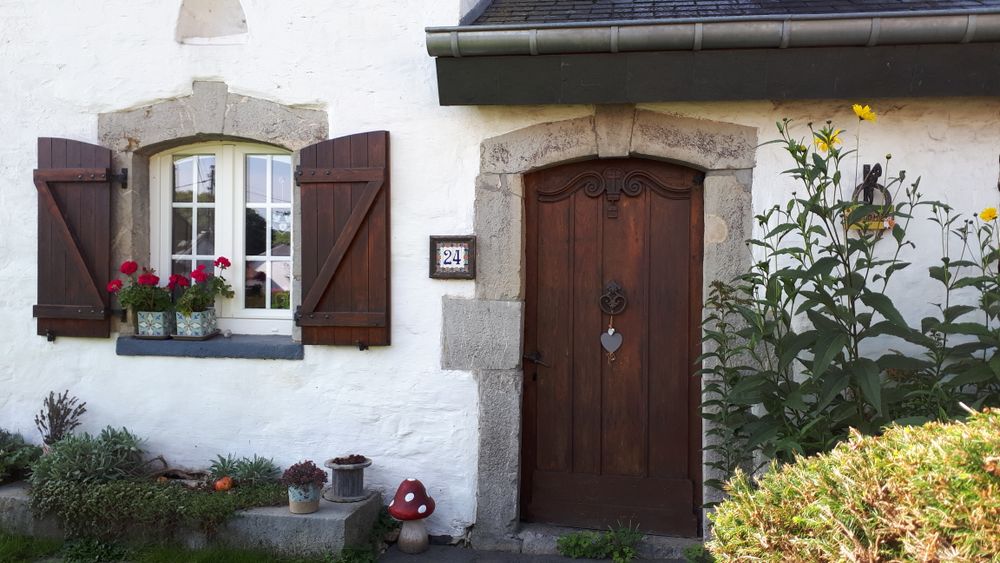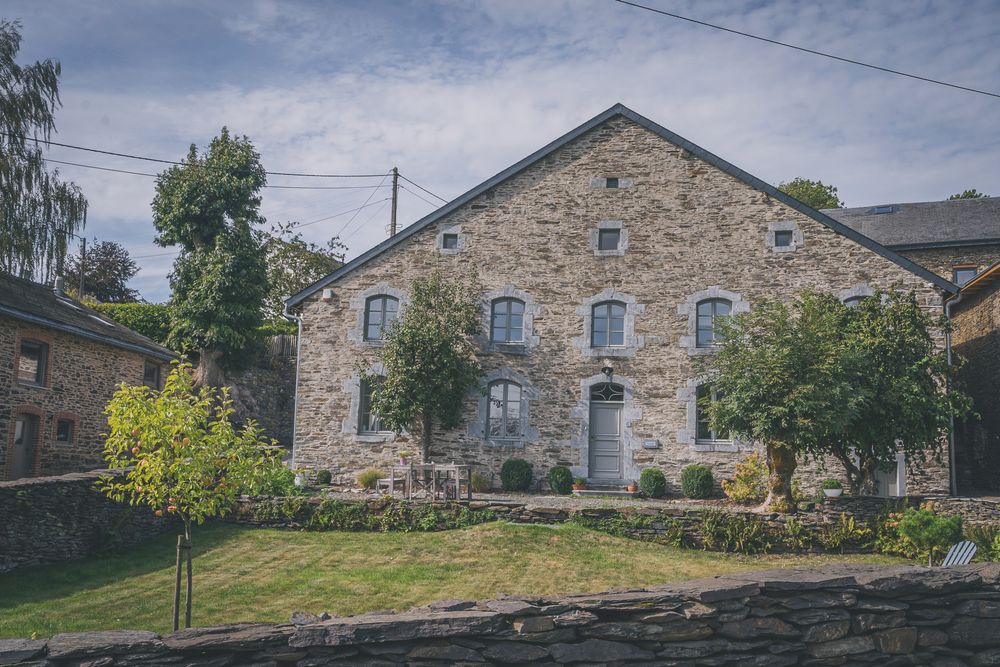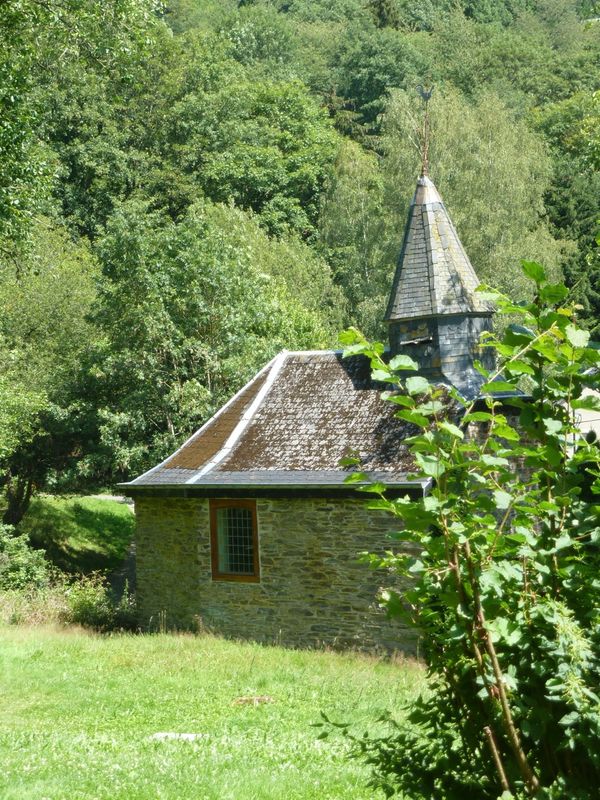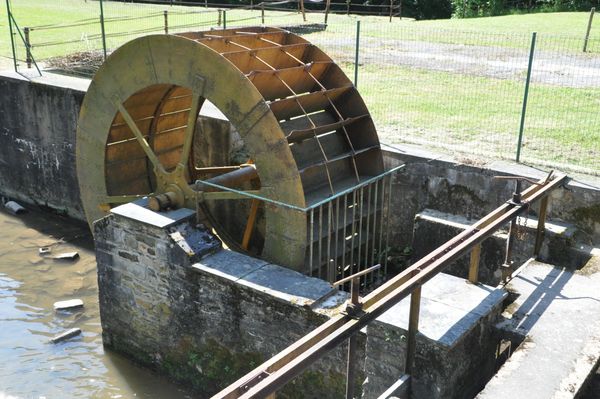
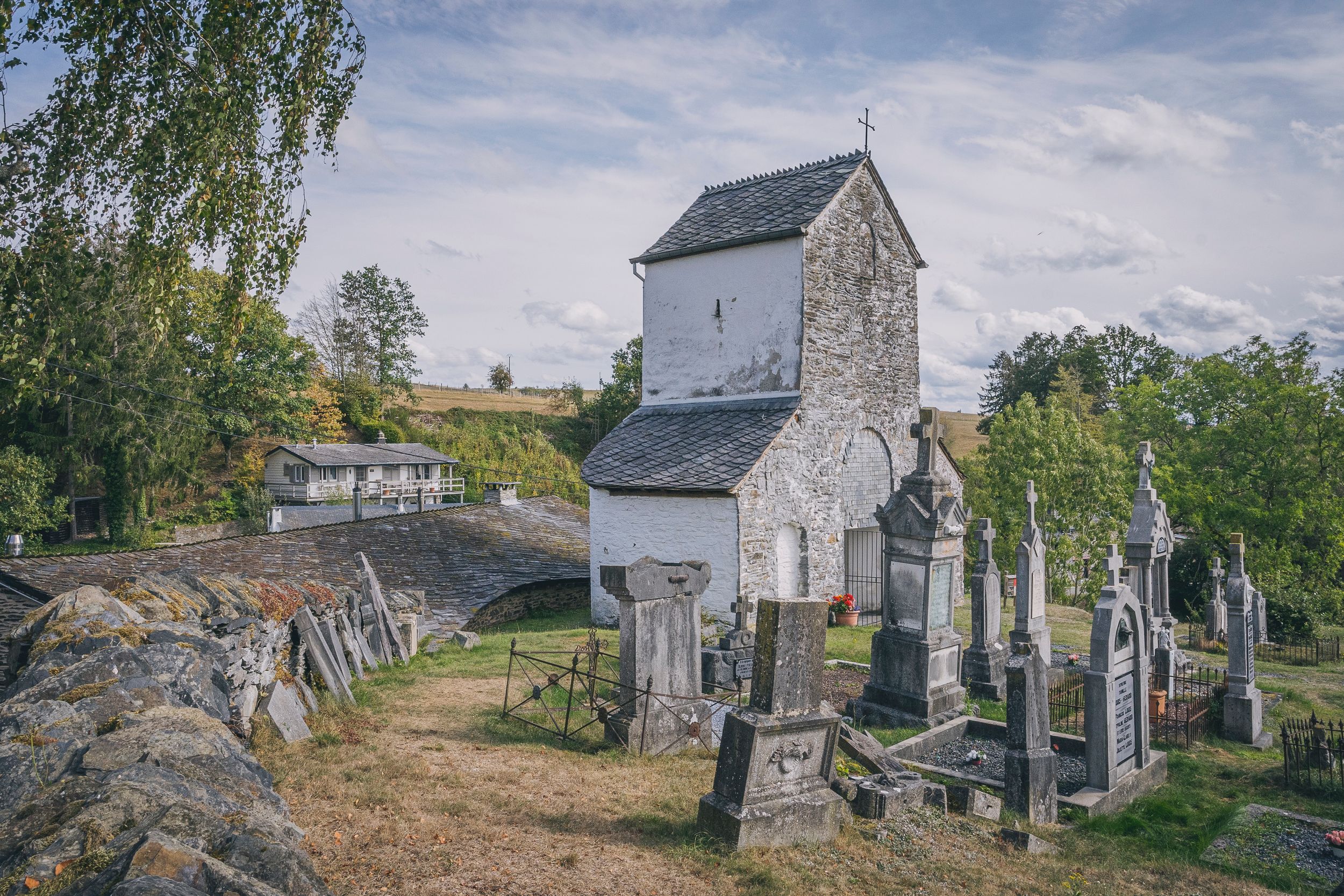
Ollomont
Where? 14, Ollomont, B-6660 Nadrin
Ollomont... a "pearl among the villages of the region". It's hard to argue with that statement! Its location itself is exceptional. Clinging to the steep slope overlooking the Ourthe valley, the heart of Ollomont has been beating for over 1,000 years, and the whitewashed rubble choir overlooking the village is nothing other than the remains of an 11th century Romanesque church, a date attested by a vase dated "one thousand and fifteen" and found on the spot.
The village abounds in dry-stone walls, starting with the exceptional beauty of the circular cemetery wall. Its many protective micro-cavities allow the discerning naturalist to discover little marvels of flora and fauna. Inside this enclosure, there is a direct view of a remarkable roof of cherbins (relatively thick slate sheets in the shape of scales, which cover the roofs of the Ardennes). Below the church is a superb, highly regarded building. Originally a presbytery and later the home of Edmond Dauchot, an Ardennes photographer, the building is surrounded by a walled garden. The architecture has been perfectly preserved, even though the walls are no longer rendered in lime.
Several of the houses are built into the rock itself and boast a number of attractive heritage features: cherbined roofs, a building bridge leading to the upstairs hay barn, arched lintels, painted wooden window frames, small stone stoops... all authentic Ardennes details that add to the village's charm!
Opening hours

